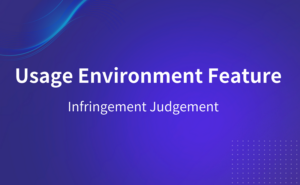A Correct Interpretation of Grant Rates for Patents in China
When companies and applicants are applying for patents in China or selecting patent agencies, they may have heard of a term called “Grant Rates”.
As the name suggests, “Grant Rates” means the probability of a patent application being granted. It is often used to demonstrate the service quality and professional capabilities of patent agencies. It also becomes an intangible standard for some applicants to measure the level of patent agencies or patent agents.
However, there is a question. If a patent agency claims to have a higher grant rate than another agency, does this mean that this agency has more excellent professional capabilities? Should applicants simply choose the agency with the highest grant rate?
Grant Rates Can Be Influenced by Various Factors
It is undeniable that a high grant rate can reflect the service level of a patent agency to some extent. An agency with an 80% grant rate is obviously more professional than one with a 50% grant rate. However, a higher grant rate does not necessarily indicate higher professional competence of the patent agency.
Firstly, different calculation methods of patent grant rates can affect the results.
There are usually two ways to calculate the grant rates. One is to analyze and calculate the ratio of the number of cases granted in a given year to the number of cases concluded in that year, based on the year in which the patent application was filed. The other way is to analyze and calculate the ratio of the number of cases granted in a given year to the number of cases concluded in that year, based on the year in which the patent application was concluded.
For cases received office actions, they usually go through back-and-forth debates with examiners. It measn that these caes are hardly concluded in the year in which the patent application was filed, resulting in a small number of cases concluded. Therefore, when using the first calculation method, the grant rate may be higher because most of the concluded cases in that year are granted cases.
For cases with novelty and inventive step, as well as a request for expedited examination or prioritized examination, they may be concluded within one year. Therefore, when using the second calculation method, a grant rate of 90% or higher can be reached. However, such statistics may not reflect the real situation, with limited reference value.
Secondly, the comprehensive considerations for business operation can also affect grant rates.
Some companies may prioritize protecting their intellectual achievements rather than pursuing a high grant rate. For example, if an applicant’s purpose for a particular application is to maximize the scope of protection, they may argue their case to the end when responding to office actions, resulting in a lower probability of grant for that application. For another example, if the technology involved in a patent application is challenging to commercialize, or new alternative technology arises, this patent applciation may be abandoned for the applicant’s own considerations, which will also affect the grant rate.
Therefore, solely evaluating the service level and quality of a patent agency based on the grant rate of patents can inevitably be biased
What should applicants pay attention to when selecting a patent agency?
On the one hand, applicants should consider the proportion of utility models patents in China. Utility models and invention patents differ significantly in terms of protection scope, protection terms, examination standards, etc. Utility models do not undergo substantial examination and have a far lower difficulty rate to be granted compared to invention patents. If the proportion of utility model patents is high, the grant rate cannot objectively reflect the agency’s professional competence, even if an agency has a high grant rate.
On the other hand, applicants should also pay attention to the quality of granted patents. Some agencies sacrifice the scope of protection by adding unnecessary technical features, for the sake of high grant rates. However, such patents, even if granted, are “worthless” in patent litigation, as they cannot effectively safeguard the applicant’s legal rights. Achieving a high grant rate through a large number of low-quality patents, or even abnormal applications, not only brings no meaningful protection to clients’ technology but may also expose them to legal risks.
Therefore, applicants must “keep their eyes open”. A high grant rate is not everything. Evaluating and selecting a patent agency from multiple perspectives, such as writing quality, patent quality, dockeitng control, communication efficiency, etc., is the best approach.
One more thing, the quality of a patent application, from a legal perspective, is not only reflected in been granted but also in the scope of protection (whether it covers sufficient scope to make it difficult for competitors to evade), the stability of the patent (whether it can withstand patent invalidation challenges), and the ability to enforce the patent (whether infringement can be easily detected and proven).
Conclusion
The grant rate can indeed reflect the professionalism and service quality of a patent agency to some extent, but it is not the sole indicator of an agency’s abilities. When selecting an agency, applicants should not only pay attention to grant rates.
